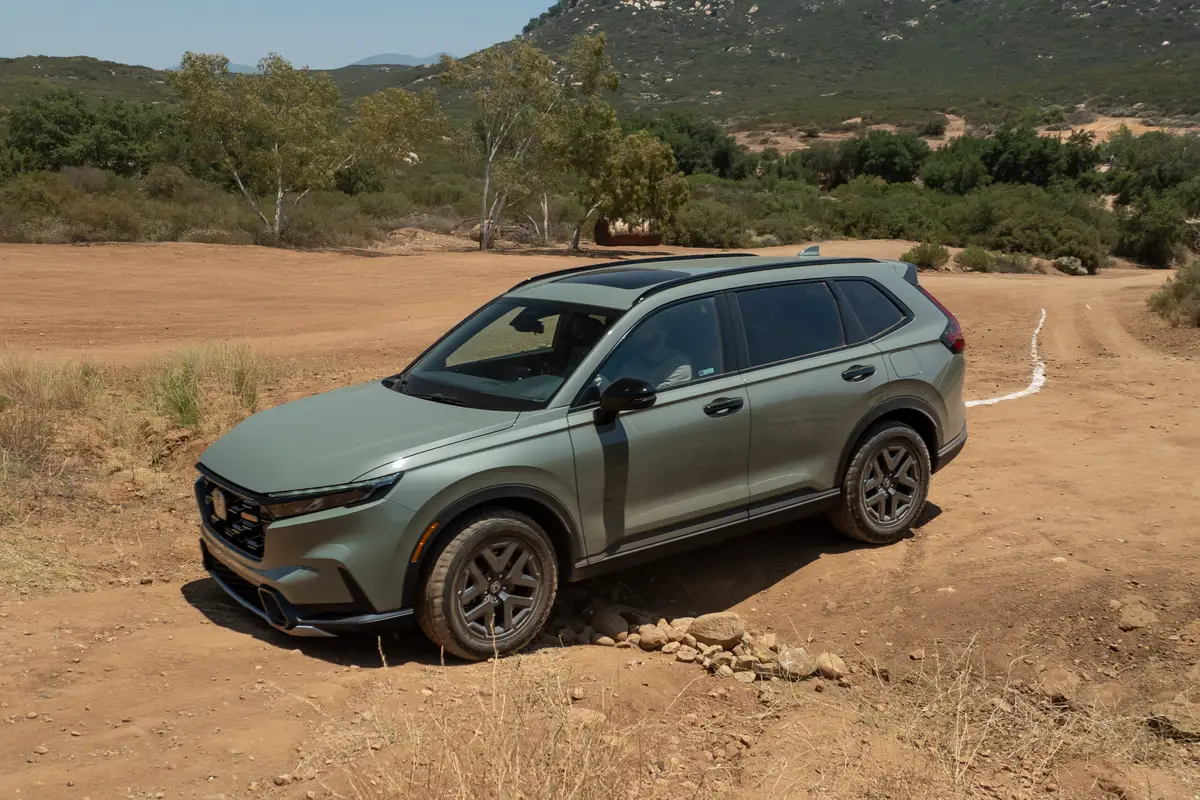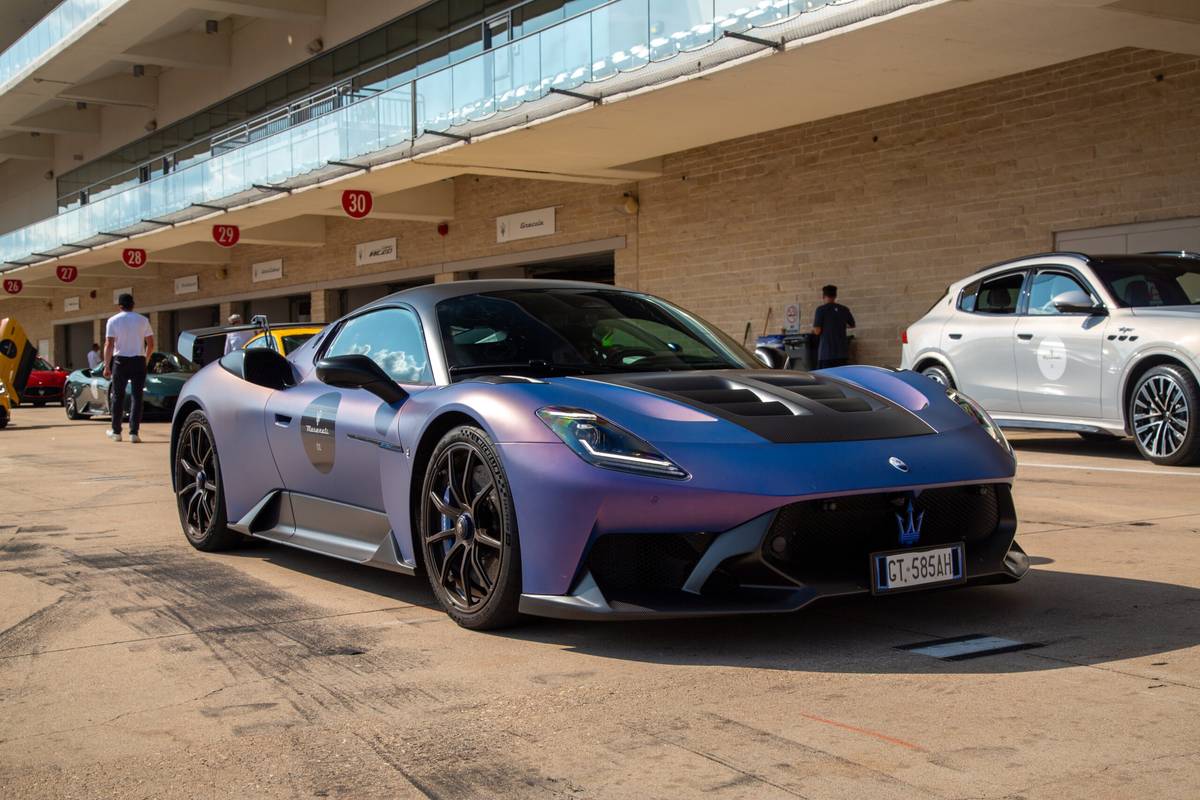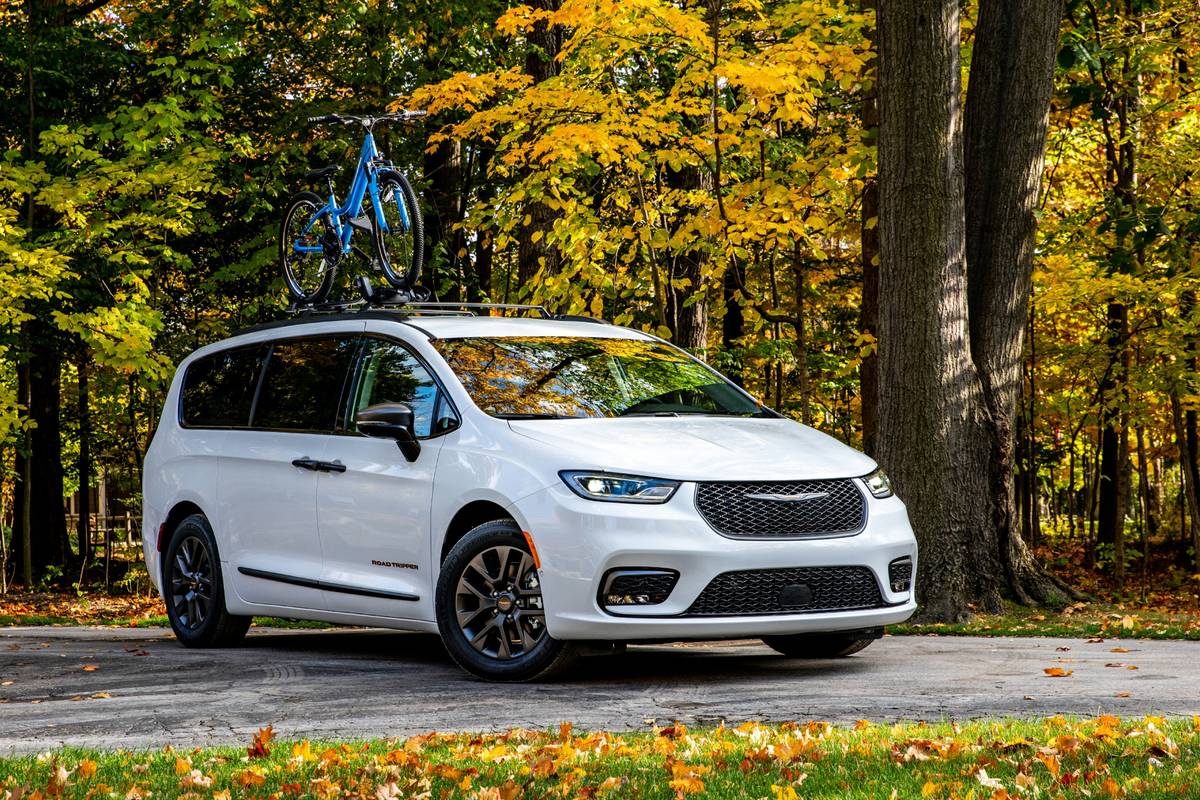2022 Subaru Ascent Review: Value Pricing, Real-World Problems


The verdict: The Ascent is the best Subaru for families, but it’s hardly the best SUV in its class. For Subaru loyalists who’ve outgrown their Outbacks, it might be time to consider another brand.
Versus the competition: Little has changed since the Ascent placed fifth out of seven SUVs in a Cars.com comparison test in late 2019. Subaru’s contender offers good visibility and standard-all-wheel-drive value, but it’s short on passenger and storage space, and its lethargic drivetrain creates more noise than confidence.
Now in the fourth year of its current generation, the Ascent is a three-row SUV that seats eight (seven if you get second-row captain’s chairs, replacing the standard three-seat bench). New for 2022 is an Onyx Edition, which has darkened styling elements and Subaru’s neoprene-like StarTex upholstery; both are reminiscent of the Outback Onyx. It’s the middle of five trim levels for the 2022 Ascent (stack them up or compare the 2021 and 2022 models), all with standard AWD. We tested a 2022 Ascent Onyx Edition.
- ${price_badge()}
- ${ami_badge()}
- ${battery_badge()}${ev_report_link()}
- ${hot_car_badge()}
- ${award_badge()}
- ${cpo_badge()}
${price_badge_description}
${ami_badge_description}
The EV Battery Rating is based on this vehicle's current expected range relative to the vehicles expected range when new. ${battery_badge_text}
Certified cars are manufacturer warrantied and typically go through a rigorous multi-point inspection.
This car is likely to sell soon based on the price, features, and condition.
${award_blurb}
${award_two_blurb}
Shop the 2022 Subaru Ascent near you


Snoozy Powertrain
Rather than the V-6 engines that power most three-row mid-size SUVs, the Ascent employs Subaru’s turbocharged 2.4-liter four-cylinder, good here for 260 horsepower and 277 pounds-feet of torque. That’s stout on paper, but it’s a lackluster pairing with Subaru’s continuously variable automatic transmission. Accelerate while already in motion, and the CVT raises engine rpm and accelerates without much delay, but from a stop it’s a relaxed operator: Engine revs rise slowly — and a little behind schedule — with the press of your right foot. Throw some lead in your shoe and the drivetrain can muscle the SUV up to speed, but responsiveness feels torpid if you press the pedal anything less than three-fourths of the way. The numbers tell it all: In our seven-SUV comparison, the Ascent brought up the rear by a wide margin in the Powertrain category. Things haven’t changed appreciably since.
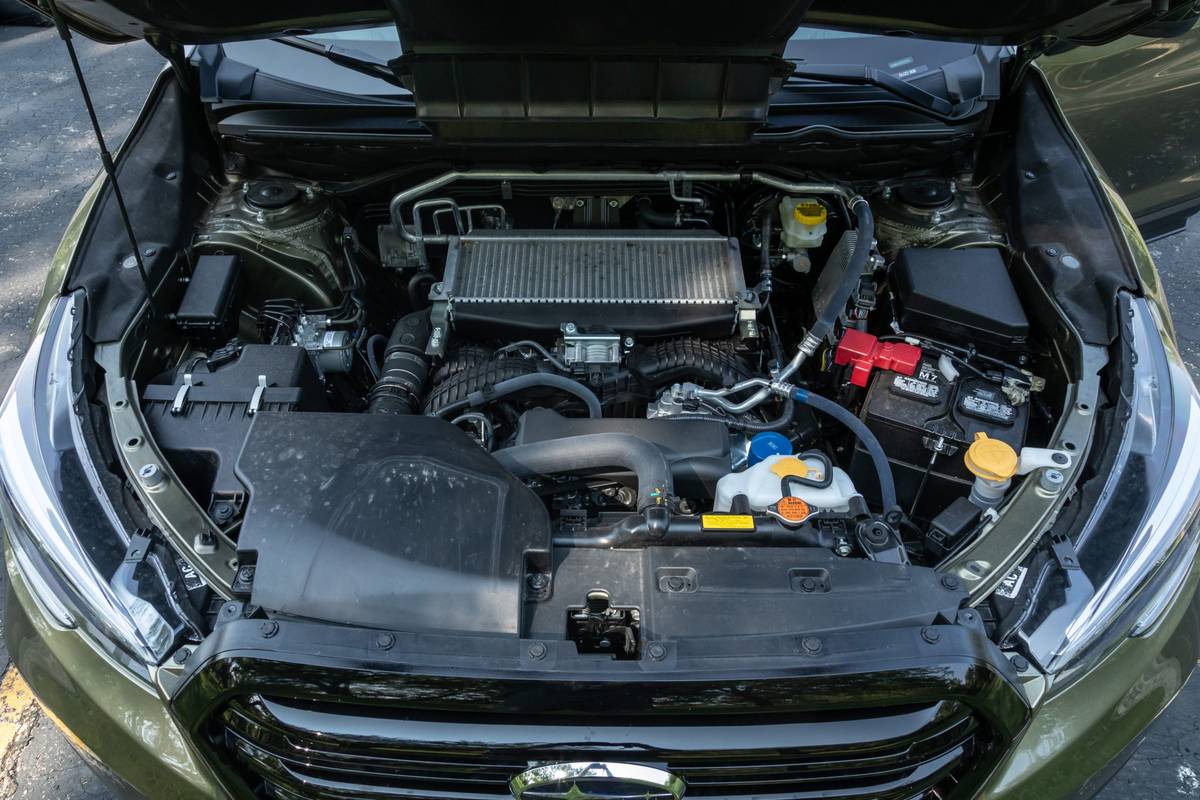
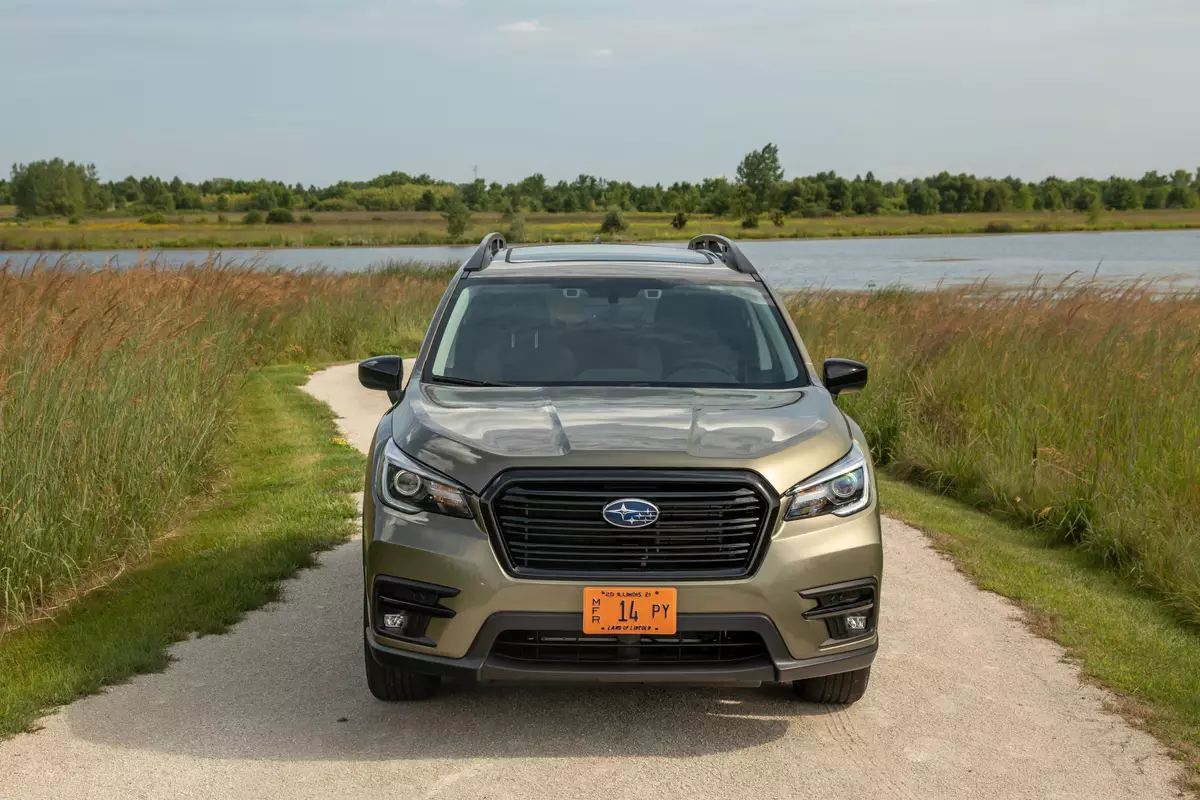
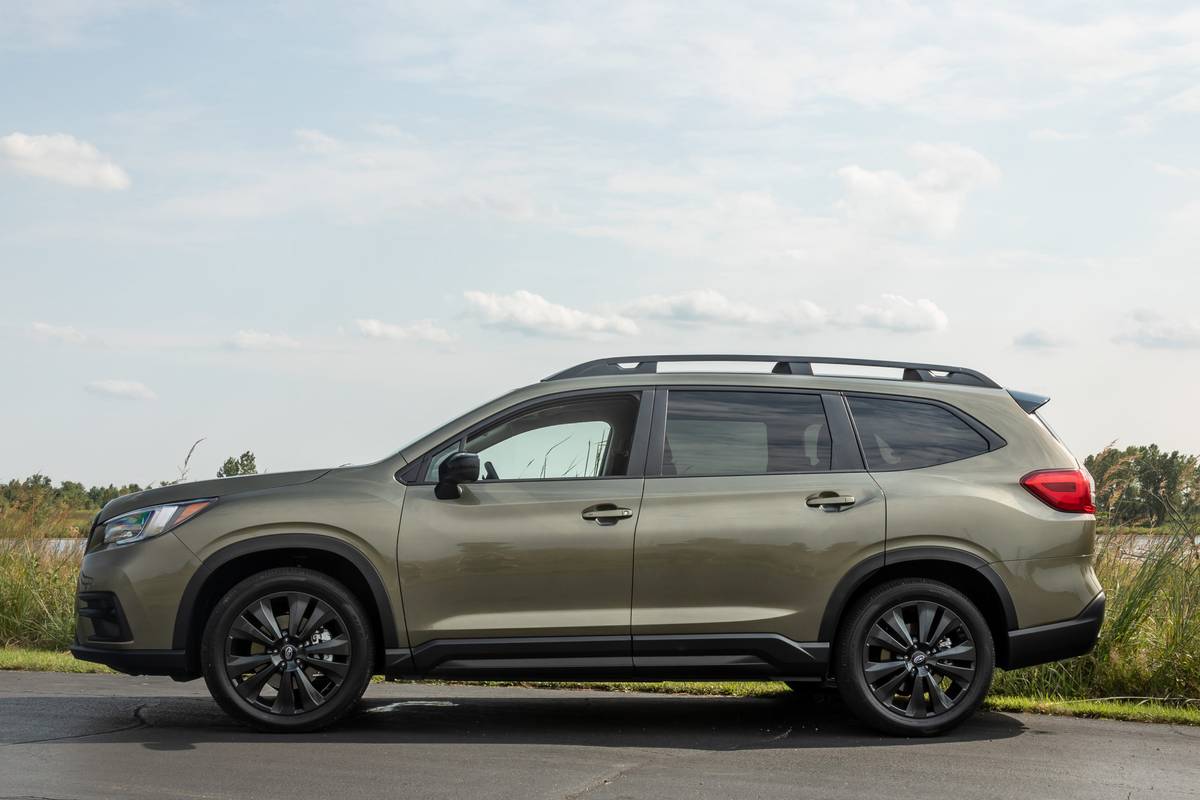
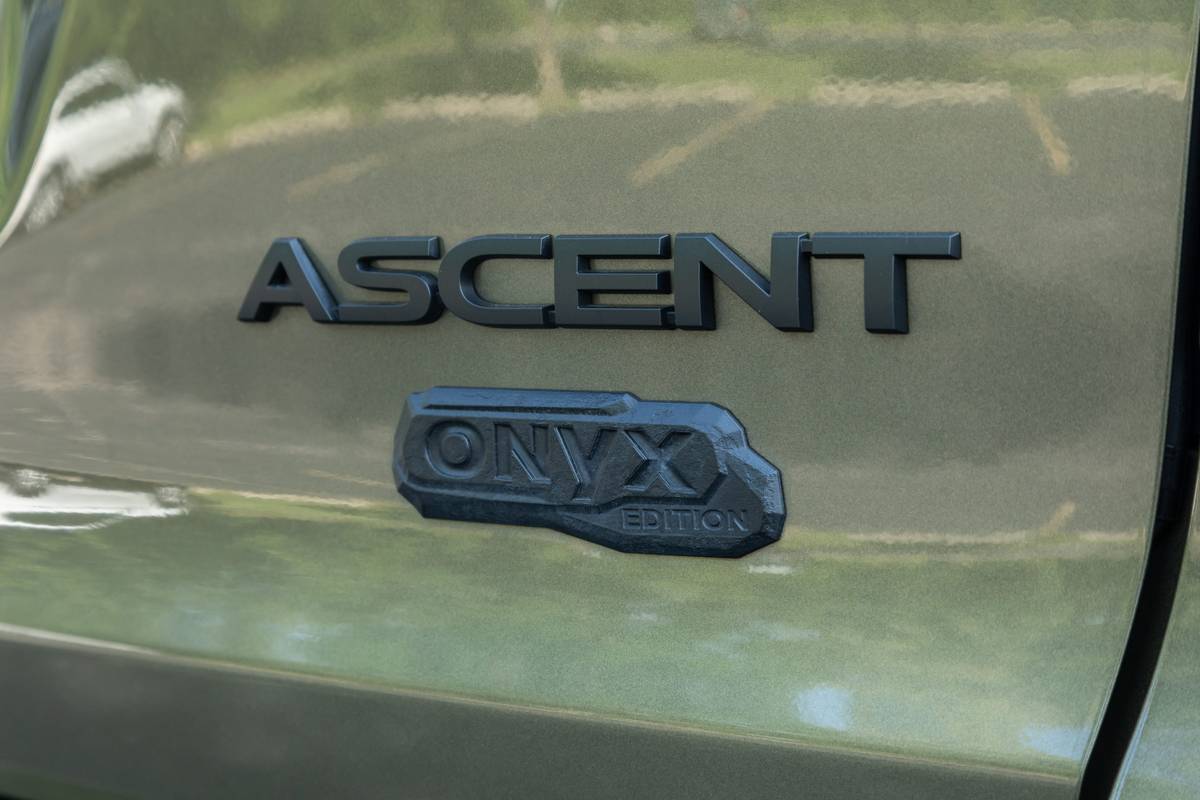
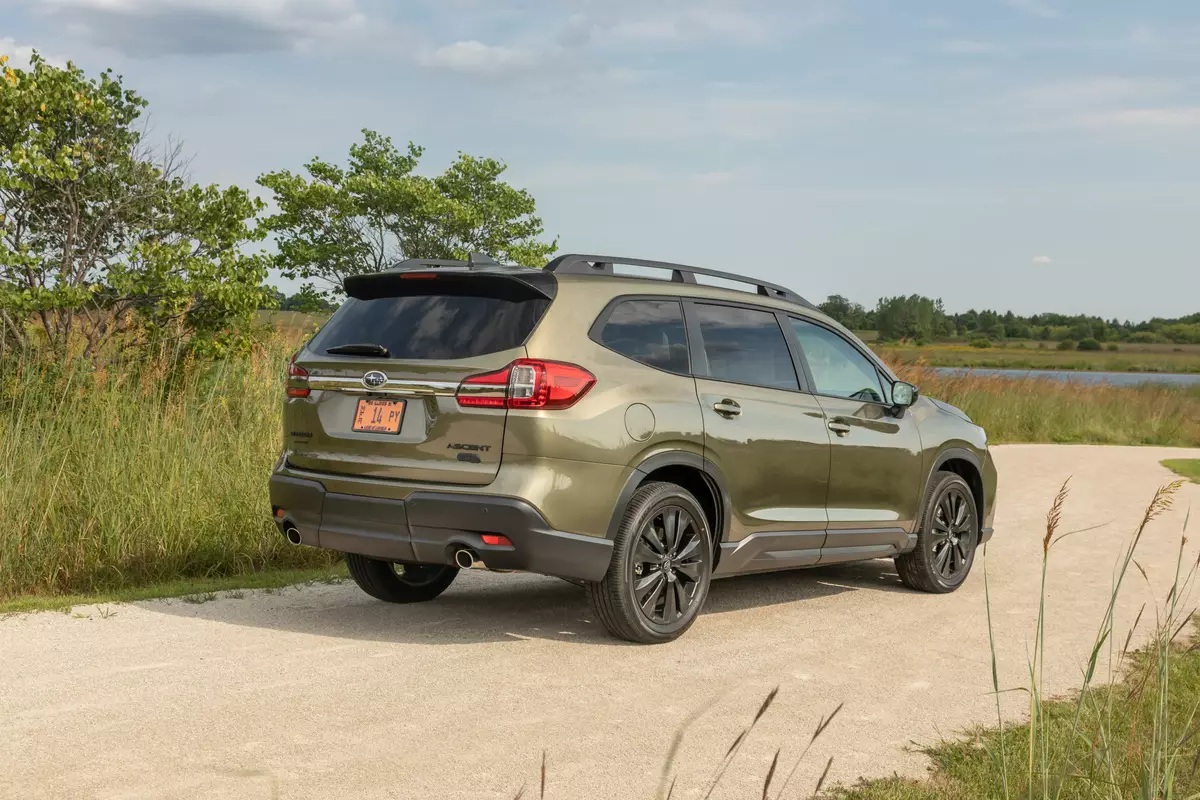
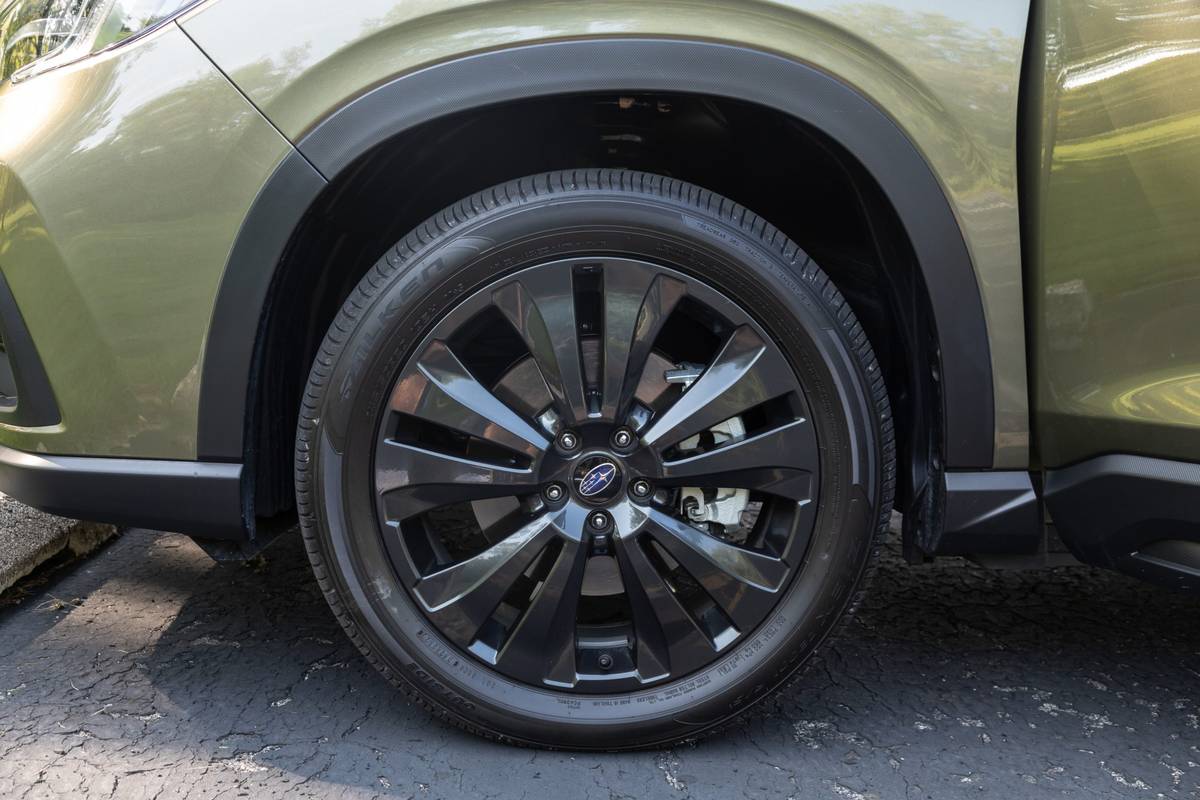

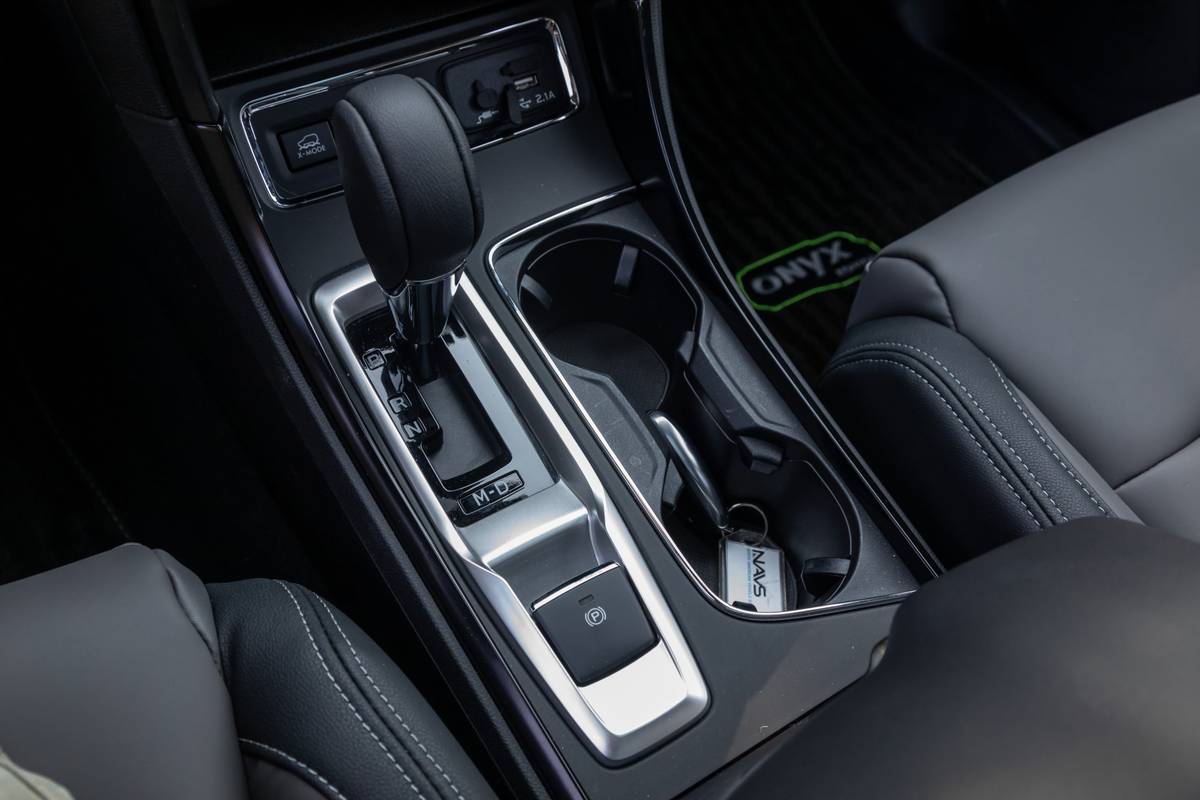








It might be more forgivable if the endgame were efficiency, but that’s not necessarily happening here. I observed 24.8 mpg over 385 miles of mostly highway driving with two adults, two kids and a long weekend’s worth of luggage on board. That’s a bit below the Ascent Onyx’s 26 mpg EPA highway rating. The Ascent’s combined EPA estimate of 22-23 mpg (depending on trim) is unremarkable versus AWD rivals. Shoppers who don’t need AWD should see even better numbers with the front-drive options other brands offer but Subaru doesn’t.
Ride and Handling
Suspension tuning is deliberately soft — a welcome approach versus firmer-riding rivals like the redesigned Nissan Pathfinder and Ford Explorer. It’s not terribly well controlled, however, with lingering body movement after rapid elevation changes; that’s something many rivals, including firmer ones, do a better job cleaning up. But the Ascent’s outright cushiness, even with 20-inch wheels, is the right idea for a family SUV, even if execution does fall short. (Lower trim levels have 18-inch wheels and higher-profile tires, which might ride softer still; we haven’t evaluated one thus equipped.)
Handling is acceptable, with some initial soupiness turning into corners but quicker reflexes thereafter. Body roll is significant, and the front tires howl in protest if you really get into it, but Subaru’s AWD sends just enough power rearward to restore some balance if you add gas through tight bends. This is no Explorer — the Subaru’s most fun-to-drive rival, with the Volkswagen Atlas a distant second — but it doesn’t embarrass itself.
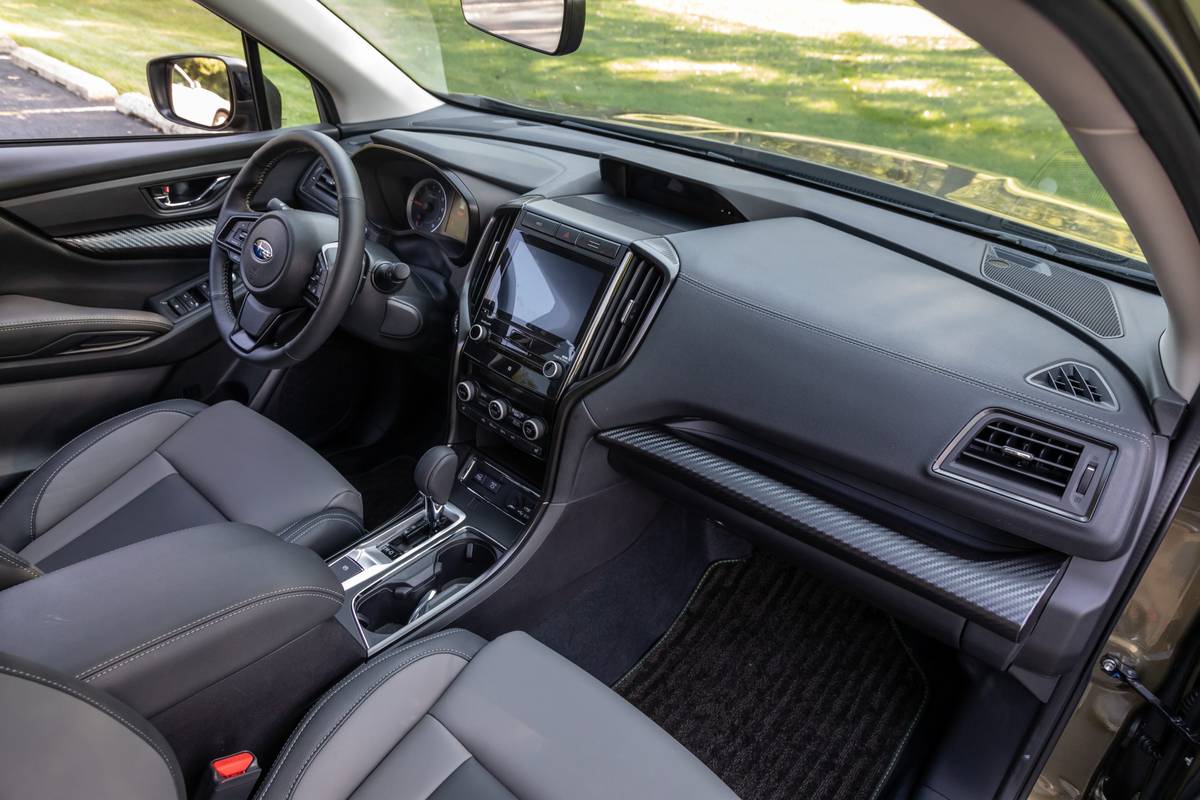
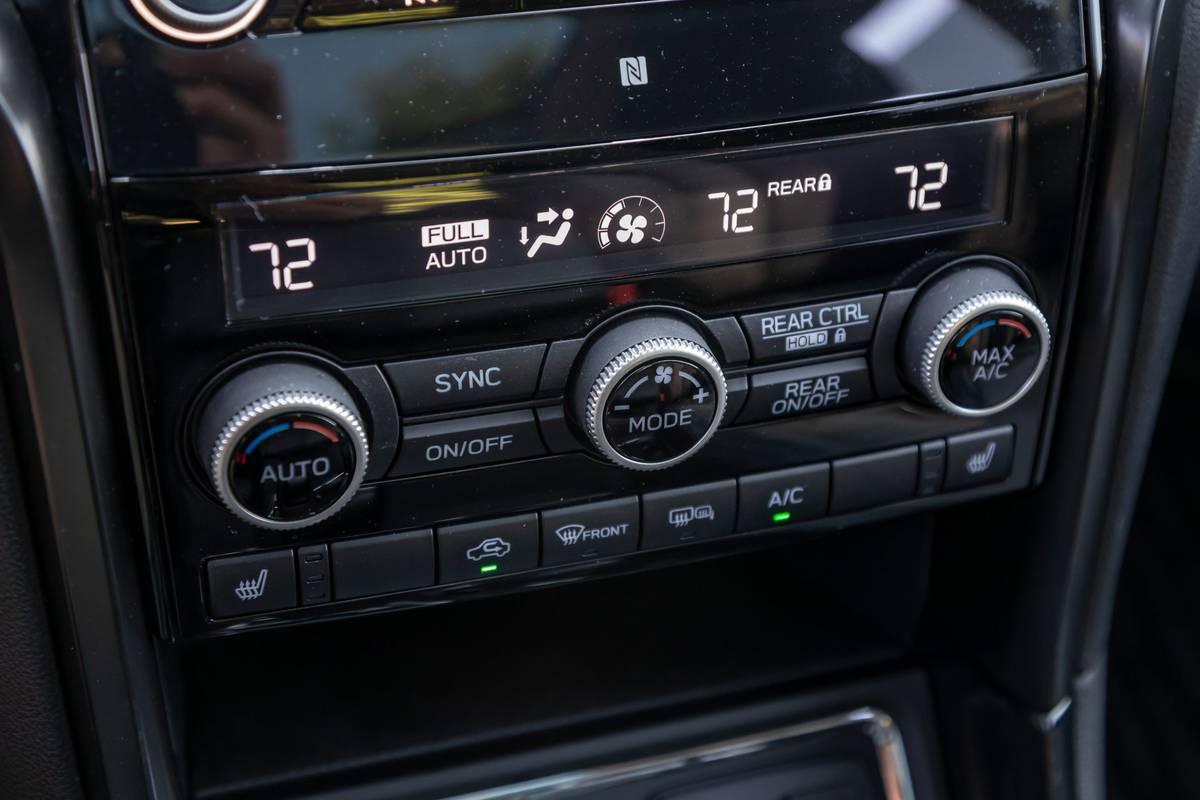
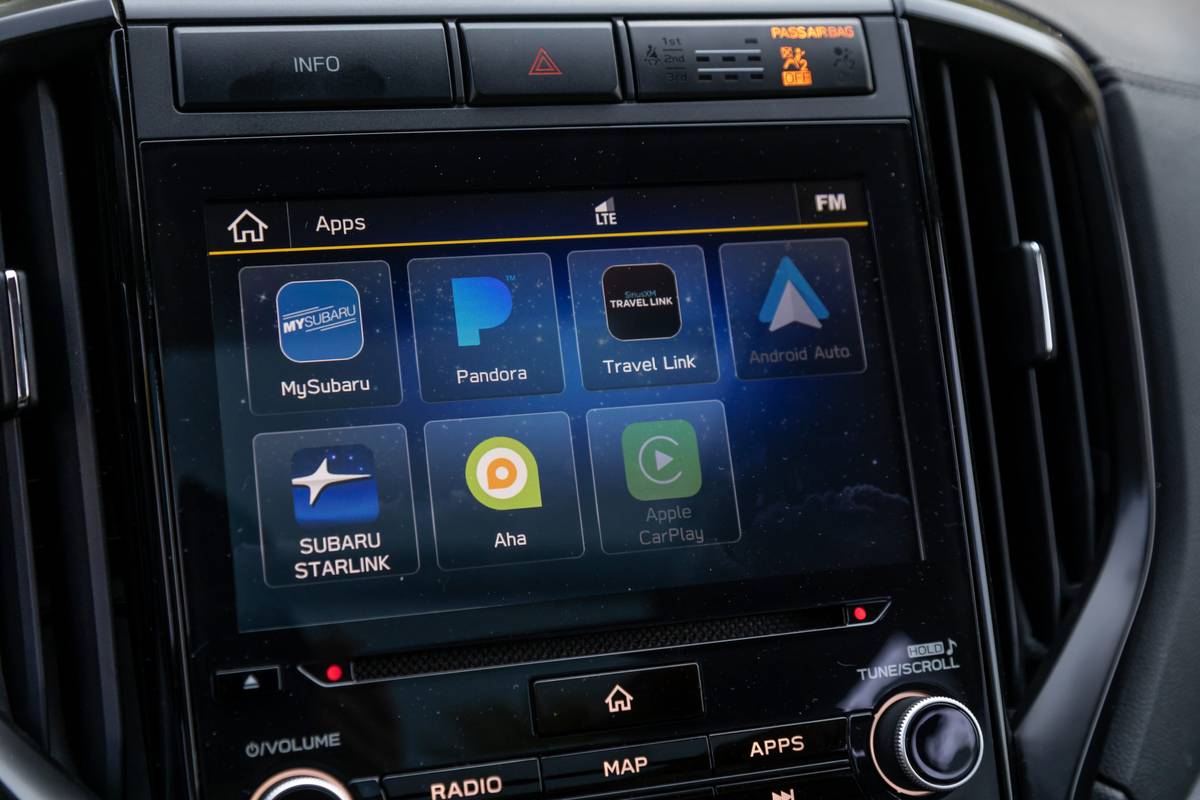
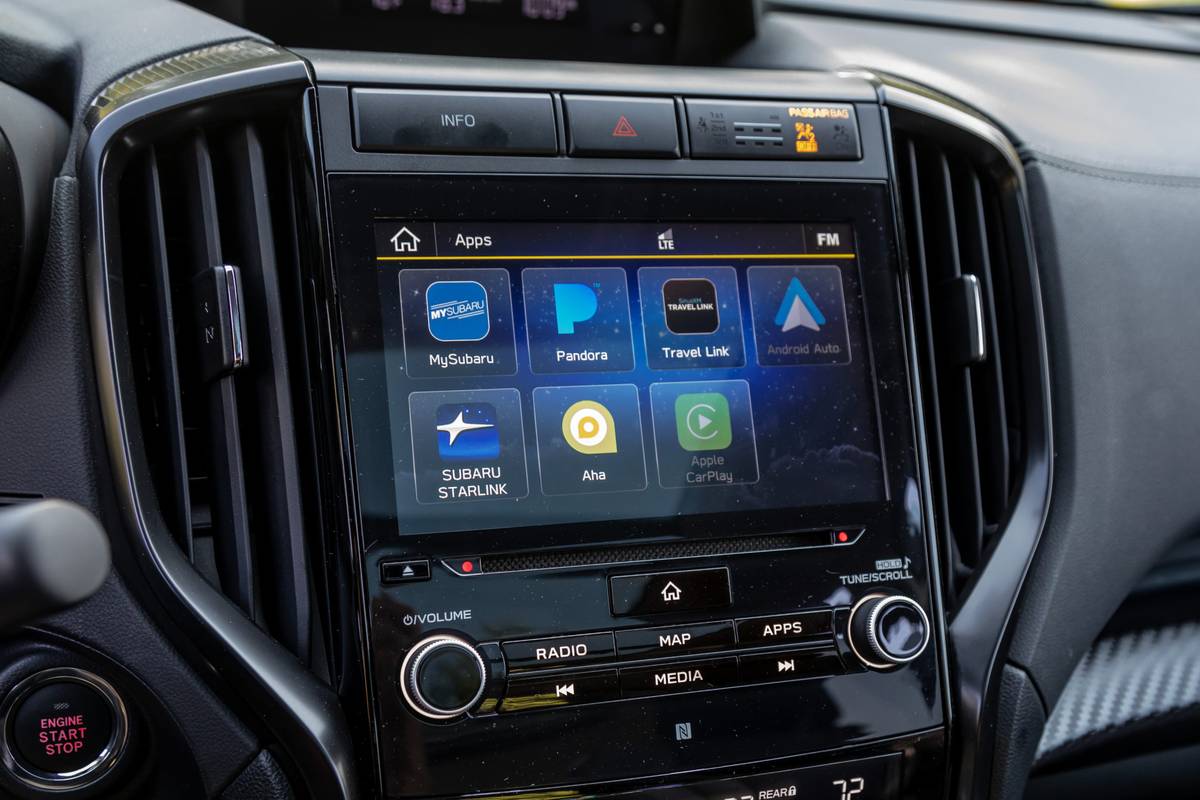
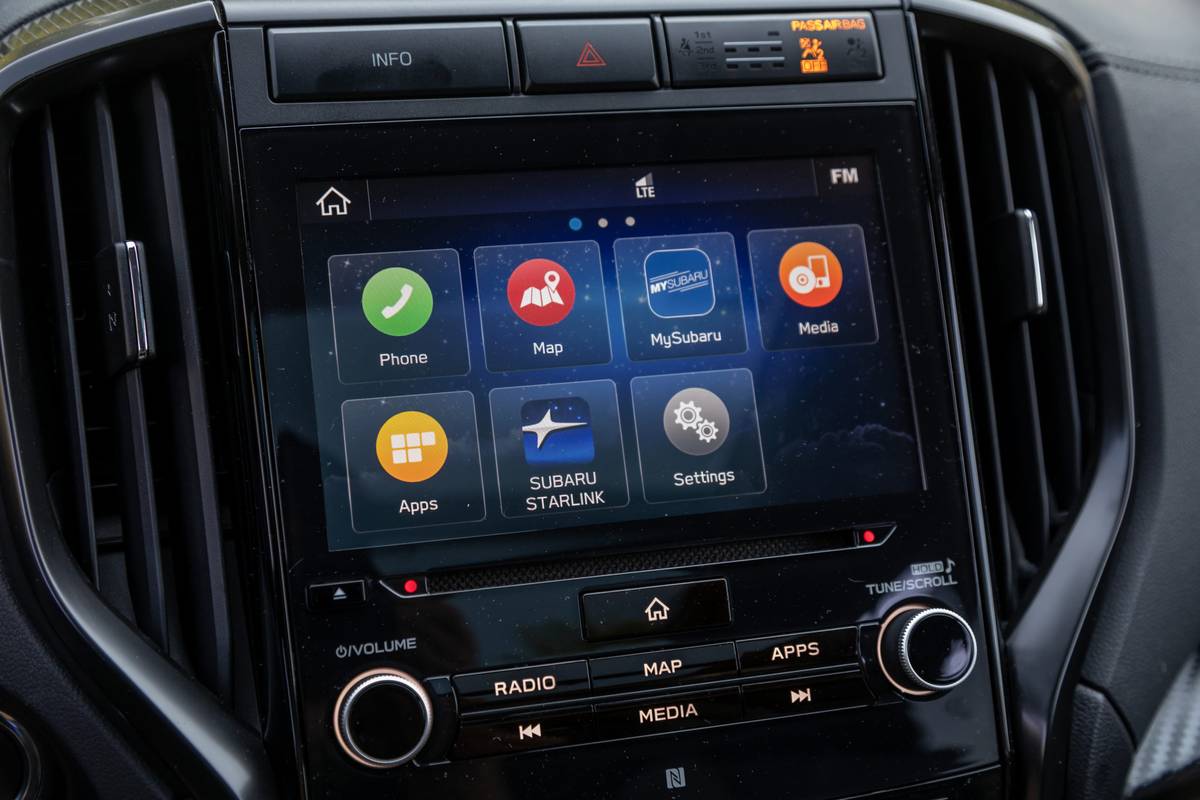
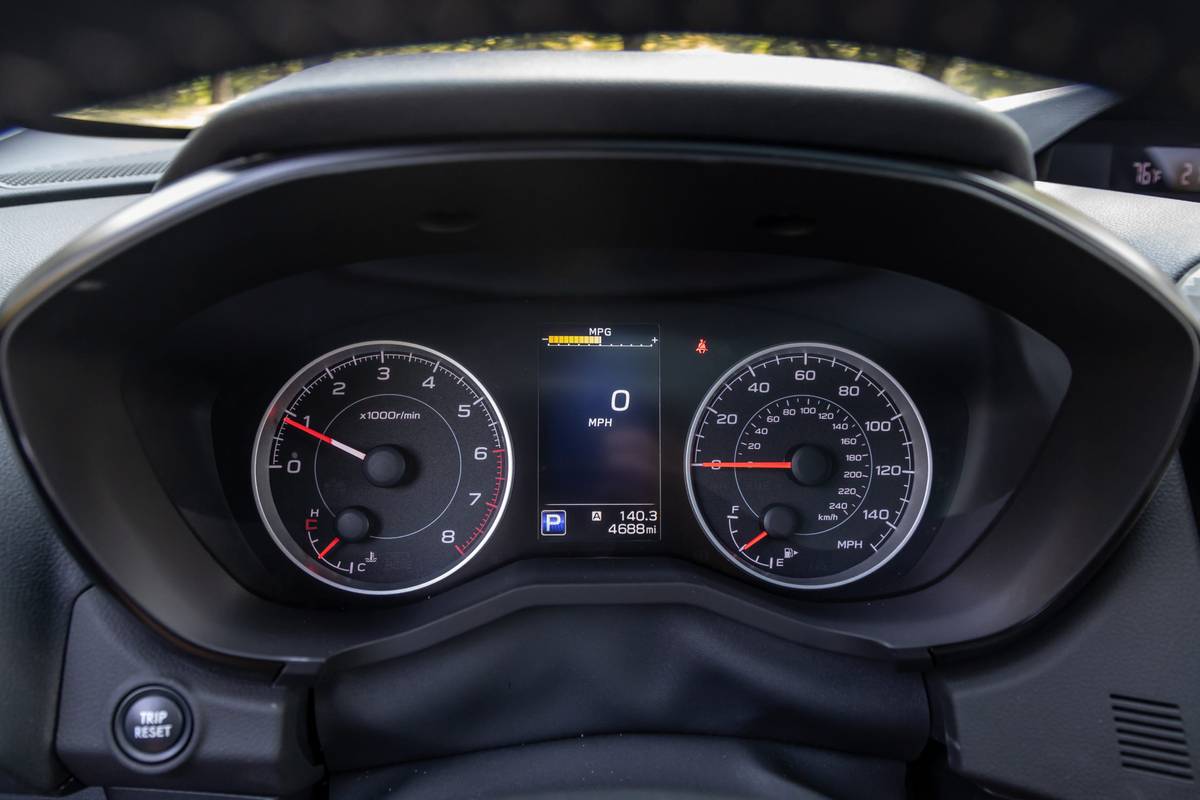
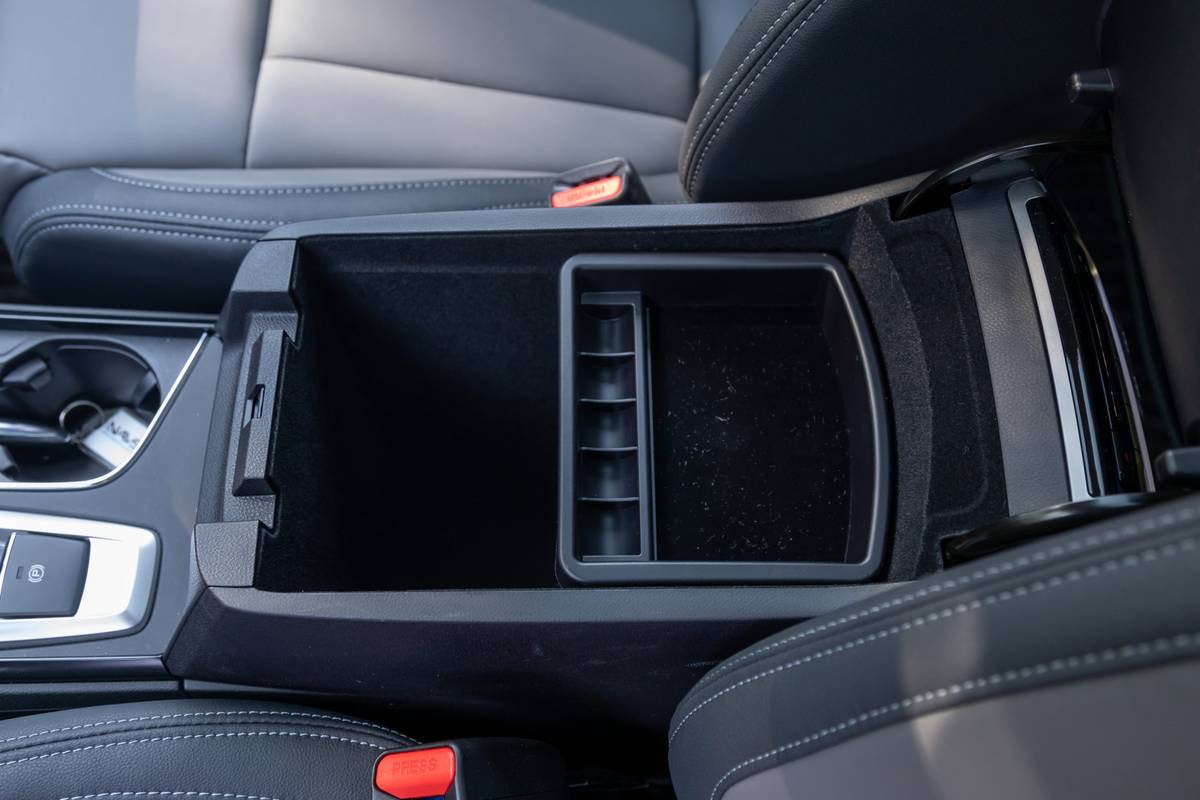
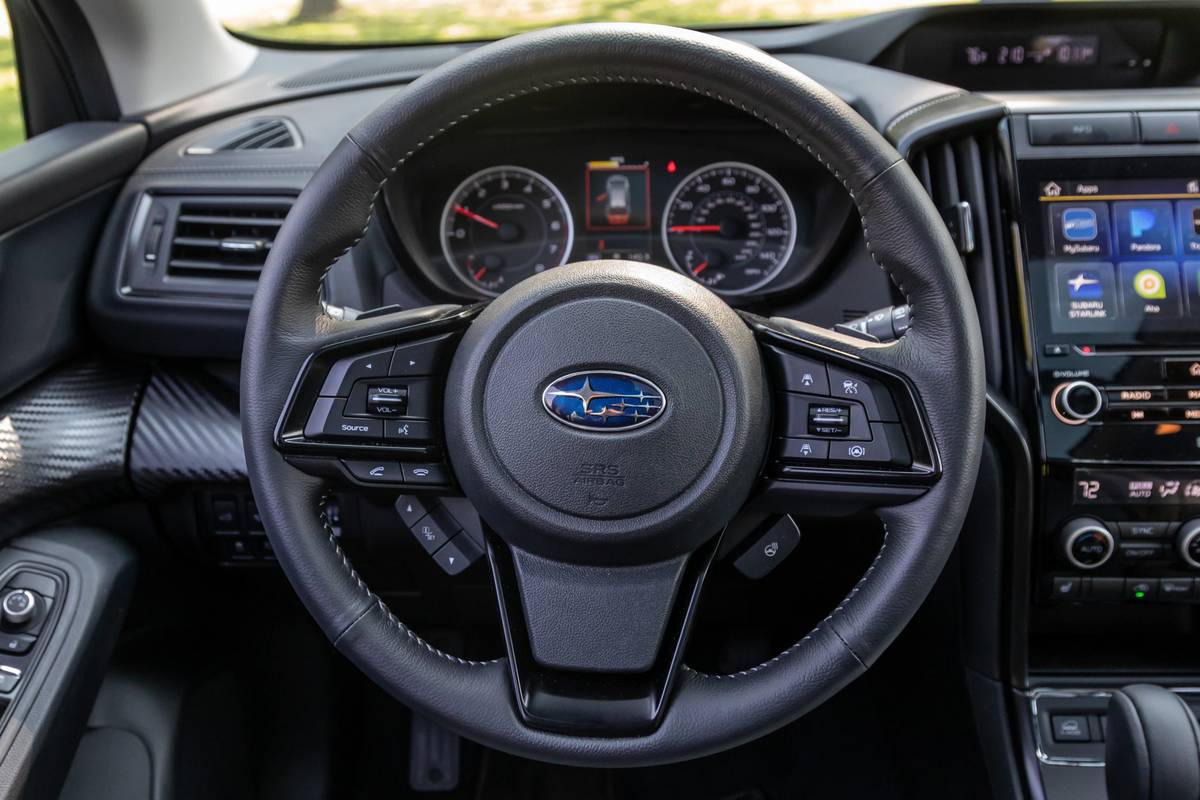








Sight Lines, Space and More
Subaru has a penchant for excellent visibility: The Forester compact SUV topped the list in our comparison of rear visibility among small SUVs three times in a row, and the current-generation Impreza earned the highest visibility rating among eight compact sedans we tested head-to-head. So it goes for the Ascent, whose large windows, thin roof pillars and useful technology (top trim levels get a camera-based rearview mirror) make sight lines excellent.
It’s hard, however, to get excited about too much else inside. Dashboard styling feels chaotic, with undersized controls and designed-by-committee modularity. Missing features — even as options — include a height-adjustable passenger seat, wireless smartphone integration and anything larger than an 8-inch touchscreen; many competitors offer one or more of those extras, with touchscreens as big as 12.3 inches. Subaru’s 19 cupholders mean second- and third-row passengers can enjoy bladder-bursting volumes of Mr. Pibb or umpteen storage nooks, but the all-important open storage in the front console is too small for family duty.
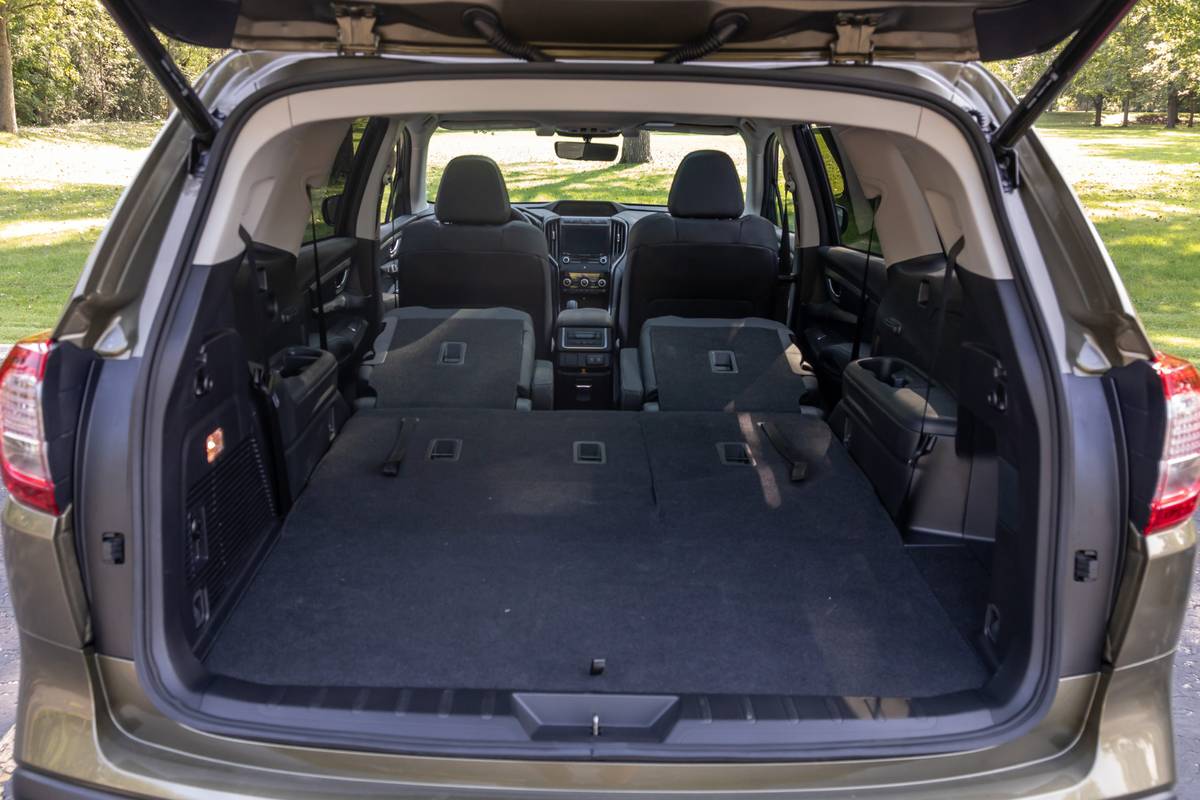
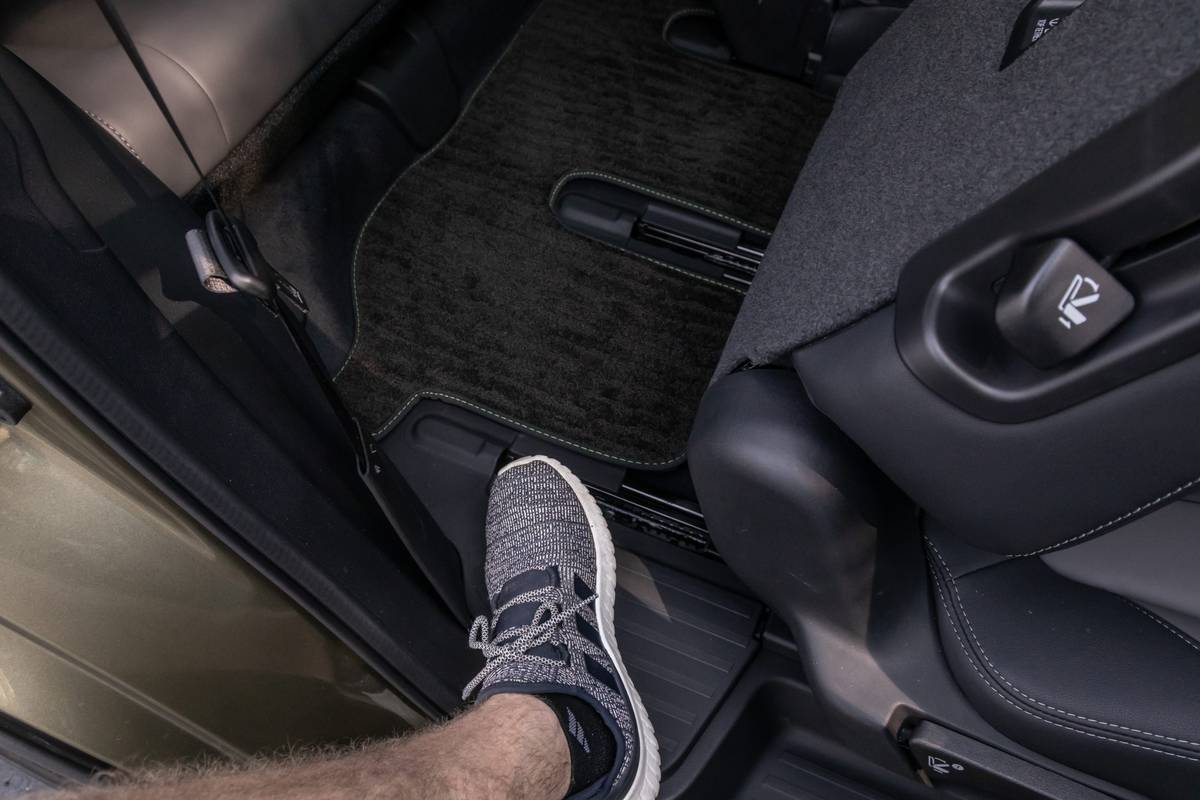
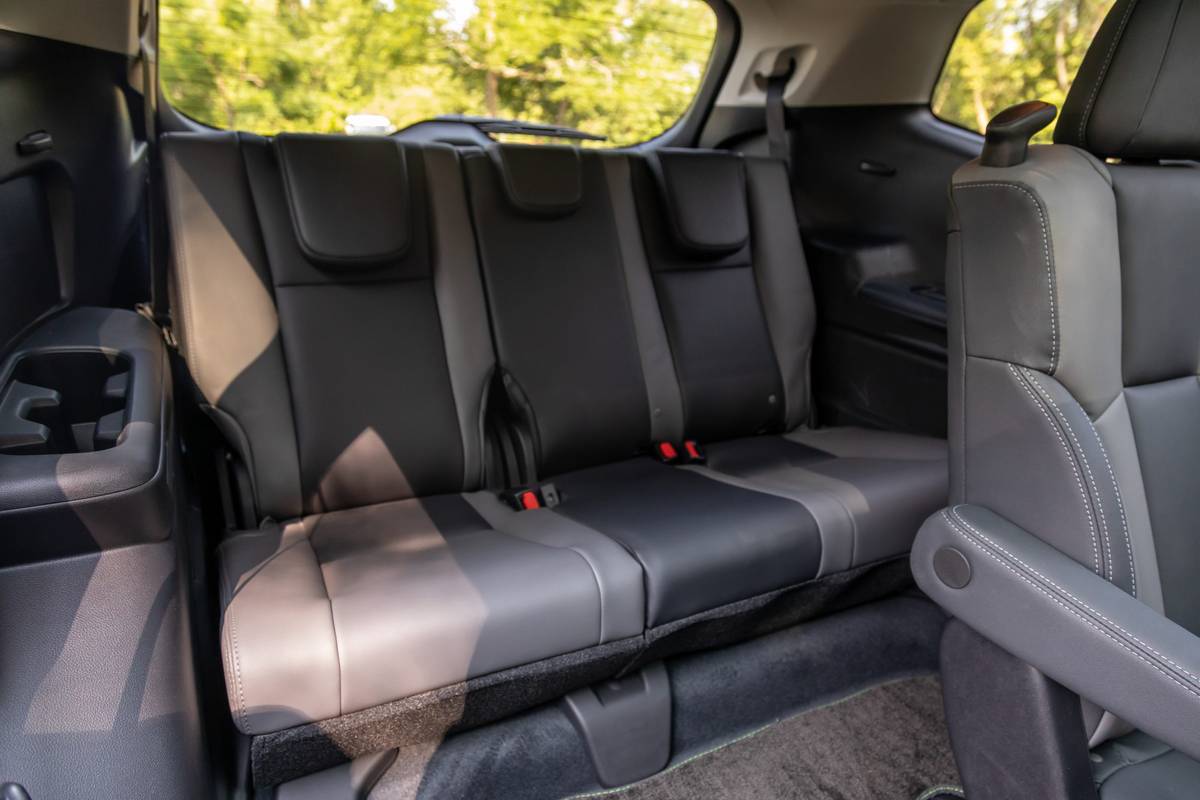
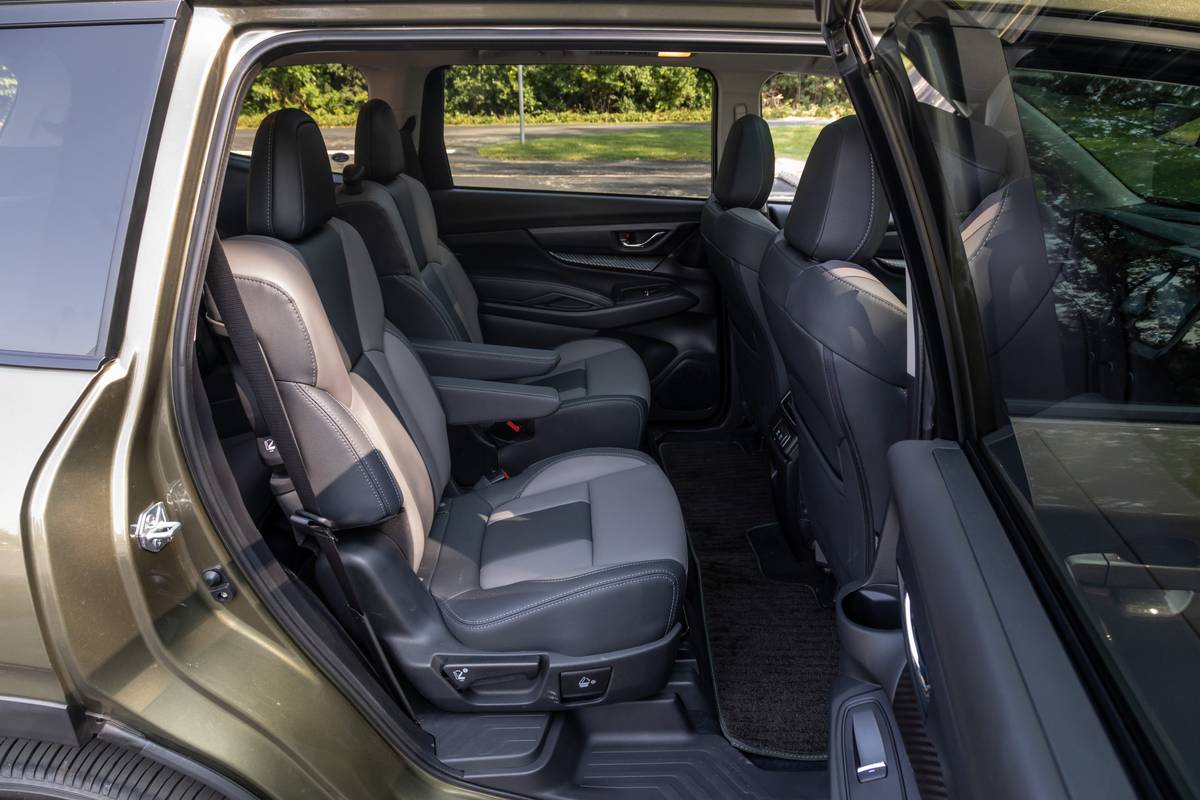

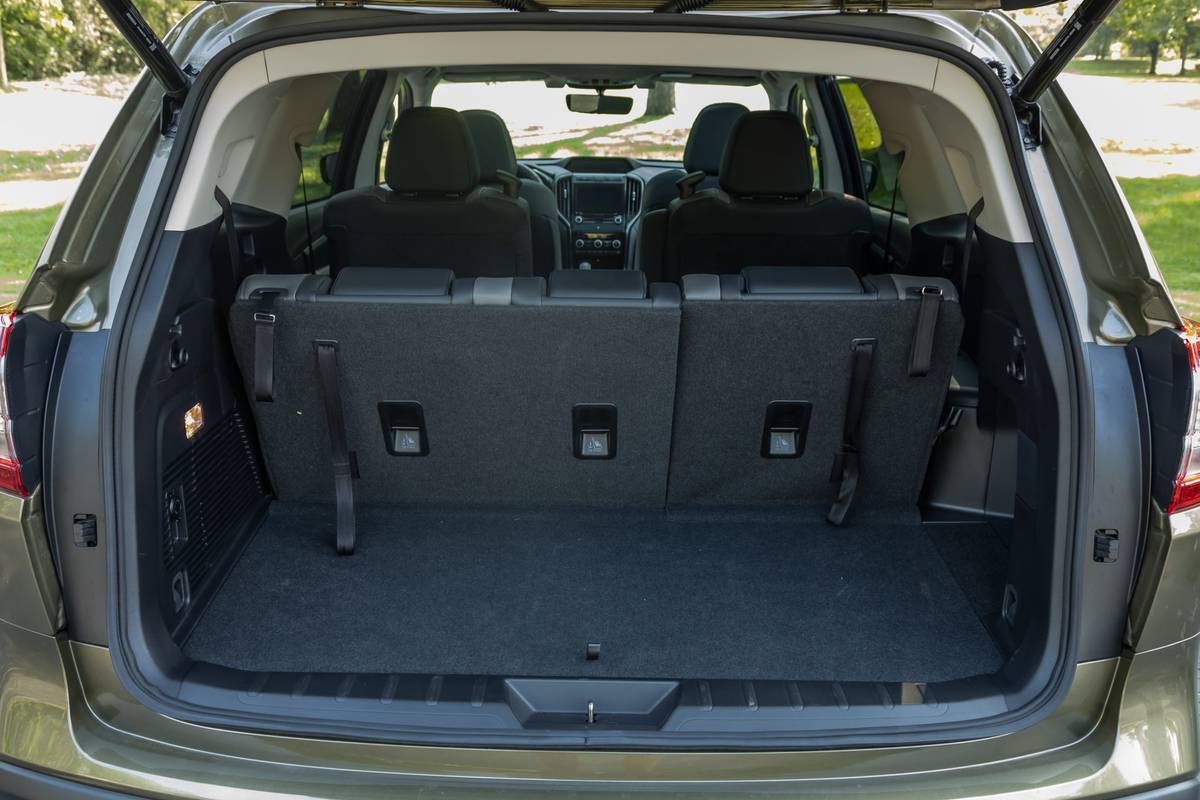
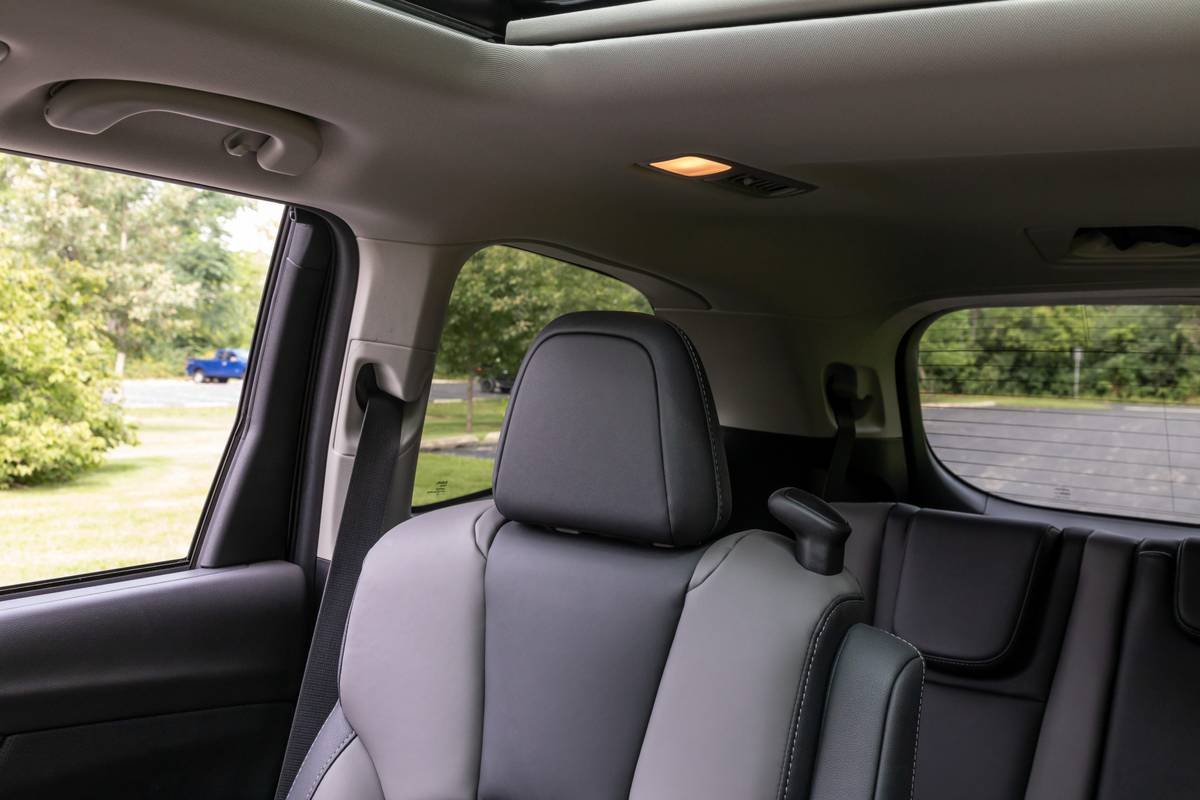
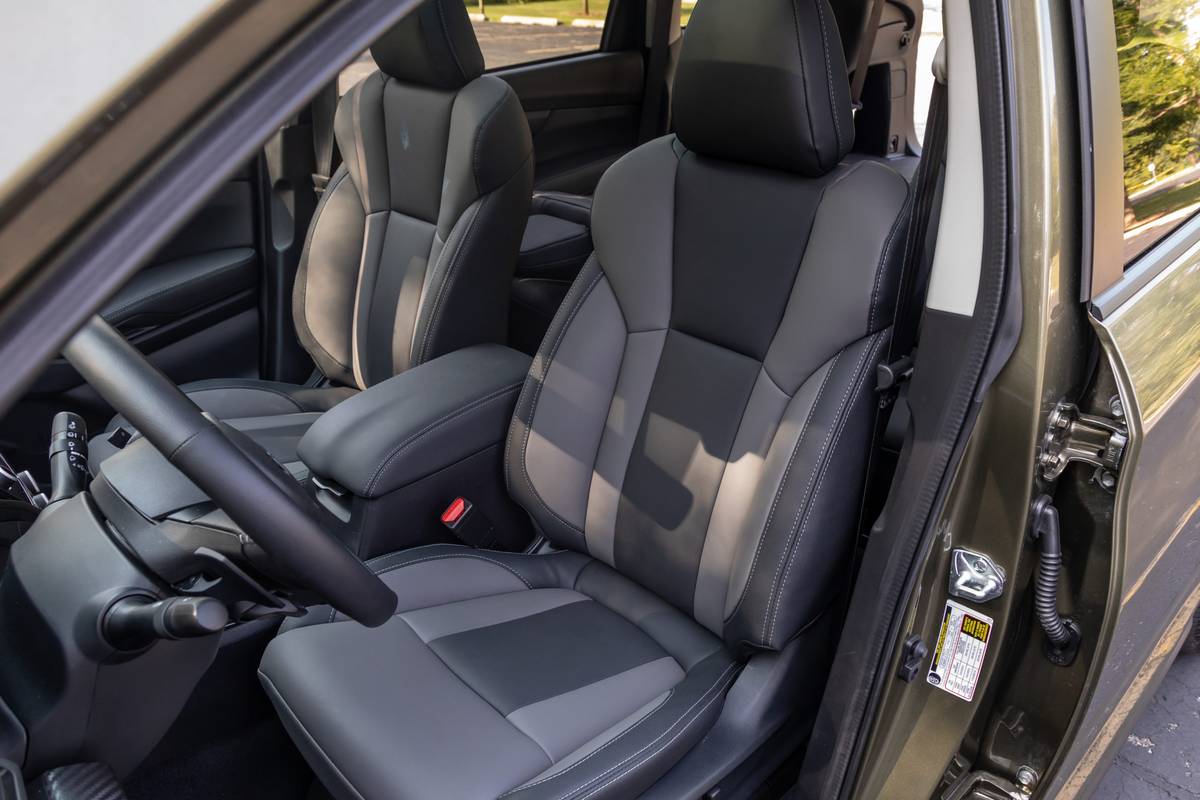
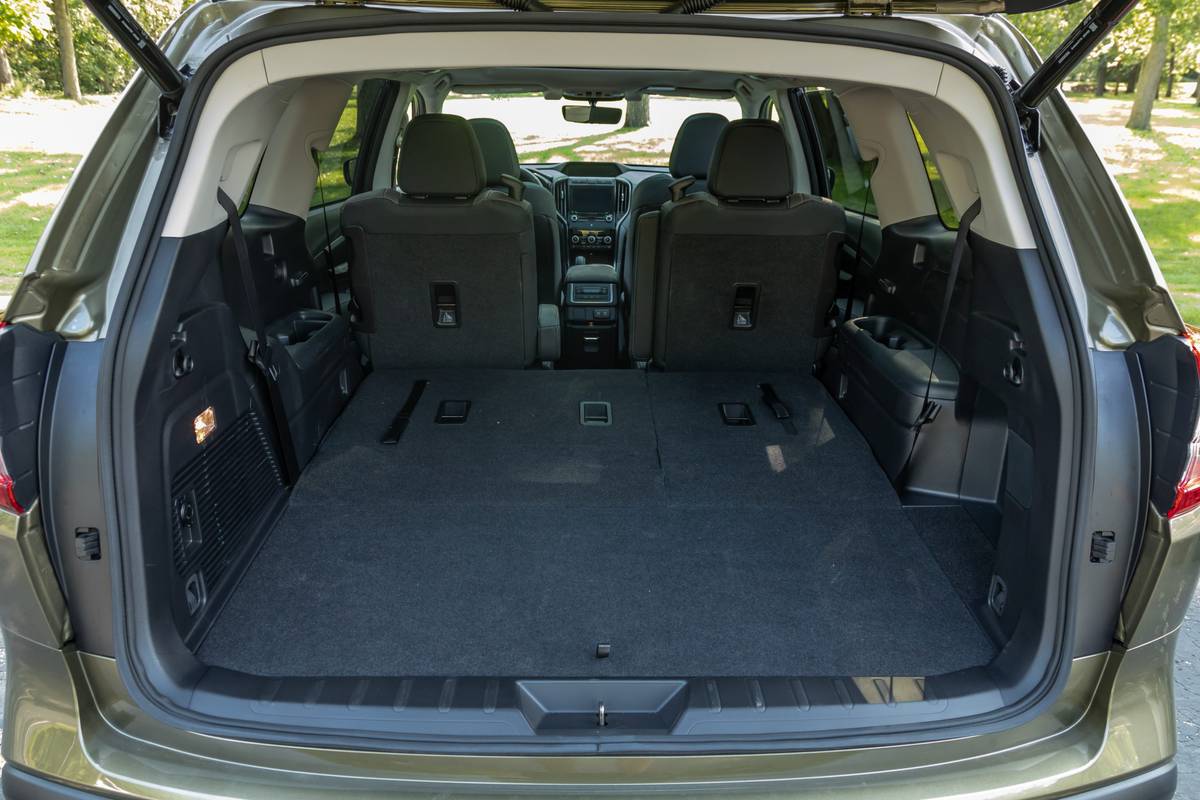









Size is a nagging issue elsewhere, too. The front seats are spacious, but the second-row captain’s chairs feel too small, with modest seating height that could leave some adults’ knees uncomfortably elevated. In the third row, raised stadium seating makes for the opposite problem: While passengers’ knees will be in better shape back there than in most slammed-to-the-floor third rows, they’ll pay the price in headroom. Folks, it doesn’t have to be this way: SUVs like the Atlas, Hyundai Palisade and Kia Telluride have adult-friendly second and third rows.
Our independent accounting of cargo volume found 23.6 cubic feet behind the Ascent’s second row — short of the Toyota Highlander (24.0 cubic feet), Palisade (26.2) and Atlas (29.9). The Ascent’s volume behind the third row (10.3 cubic feet) compares more favorably with the class. See our cargo space results for all mid-size three-row SUVs.
Related Video:
Should You Buy an Ascent?
Standard features for 2022 include tri-zone automatic climate control, wired Apple CarPlay and Android Auto, four USB ports, automatic emergency braking, adaptive cruise control and hands-on lane centering. Climb the trims and you can get two more USB ports, StarTex or leather upholstery, power seats with heating and ventilation, and a panoramic moonroof. That’s all typical fare in this class. The same goes for the Ascent’s excellent crash-test scores — commendable, to be sure, but less differentiating than they once were (the Highlander, Palisade and Explorer also earned top scores).
Pricing for the 2022 Ascent ranges from $33,420 for a base model to $46,570 for a factory-loaded Ascent Touring, the top trim level. For families needing all-weather capability, that’s a strong value across the board. The base model considerably undercuts rivals that charge extra for AWD, and even a factory-loaded Ascent avoids spiraling into the $50,000-plus stratosphere, where a few others easily reach.
That, plus the Ascent’s excellent visibility, form the best arguments for its consideration, but you’ll sacrifice a lot in terms of drivability and space. Judging by sales popularity — where the Ascent ranks as the least popular of Subaru’s SUVs and a bit player in the three-row class — not many consumers are taking the deal.
More From Cars.com:
- What’s the Best 3-Row SUV for 2020?
- 2019 Subaru Ascent: 5 Things We Like (and 3 Not So Much)
- How Do Car Seats Fit in a 2020 Subaru Ascent?
- Subaru Ascent Vs. Volkswagen Atlas: The Family (SUV) Feud Begins
- Who Makes Subaru?
- Subaru Outback: Which Should You Buy, 2021 or 2022?
Cars.com’s Editorial department is your source for automotive news and reviews. In line with Cars.com’s long-standing ethics policy, editors and reviewers don’t accept gifts or free trips from automakers. The Editorial department is independent of Cars.com’s advertising, sales and sponsored content departments.

Former Assistant Managing Editor-News Kelsey Mays likes quality, reliability, safety and practicality. But he also likes a fair price.
Latest news
